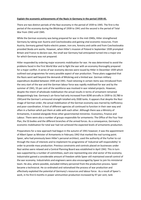Exam (elaborations)
Mergers Acquisitions and Other Restructuring Activities 9th Edition DePamphilis Solution Manual
- Course
- Business
- Institution
- San Diego State University
Mergers Acquisitions and Other Restructuring Activities 9th Edition DePamphilis Solution Manual
[Show more]




